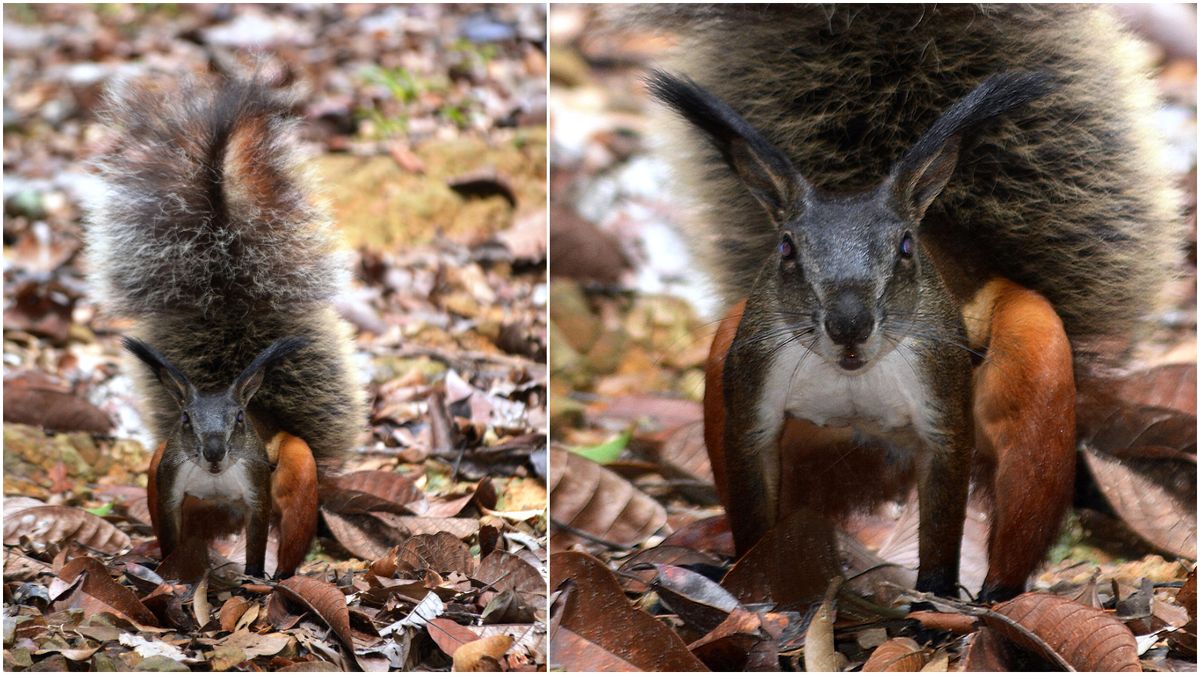
Name: Tufted ground squirrel (Rheithrosciurus macrotis)
Where it lives: On the ground and low branches of hilly forests in Borneo
What it eats: Extremely hard seeds from a handful of tree species
Why it’s awesome: Rumor has it that tufted ground squirrels, nicknamed “vampire” squirrels in a 2014 Science article, jump down from low branches onto the backs of deer and kill them by slashing the jugular vein with their razor-sharp teeth.
Local Dayak hunters report finding disemboweled deer carcasses and suspect the squirrels feast on their prey’s stomach content, heart and liver. In villages close to the forest edge, tufted ground squirrels are also said to kill domestic chickens to eat their hearts and livers.
But in 2020, researchers discovered these squirrels are not bloodthirsty meat-eaters. Instead, their weird teeth — which include large incisors on both the upper and lower jaws that have deep carved ridges like a saw — are used to eat extremely hard seeds. “We’re talking seeds so hard that a strong human with a hammer would have to work pretty hard to get into one,” lead author Andrew Marshall, a biological anthropologist at the University of Michigan, told IFLscience at the time.
Related: 30,000-year-old fur ball hidden in Canadian permafrost is actually a mummified squirrel
Tufted ground squirrels also have spectacular, club-shaped tails that are 30% larger than their bodies — one of the most voluminous tails among all mammals, relative to body size. Scientists are unsure why the squirrels sport such an extravagant appendage, but it’s possible their tails protect them against predators, such as Sunda clouded leopards (Neofelis diardi), by obscuring their small bodies and confusing potential killers.
How these squirrels ended up in Borneo is a mystery. Research shows their closest living relatives are a group of South American squirrels — but there is no sign of any other relatives in either Asia or North America that could help scientists trace their journey to Southeast Asia.
A 2012 study suggests the Rheithrosciurus lineage diverged from a group of Palearctic species some 36 million years ago and colonized Borneo overland from Southeast Asia — but the tufted ground squirrel’s evolutionary history remains cloudy. (Palearctic refers to a region comprising Eurasia north of the Himalayas, northern Africa and the temperate parts of the Arabian peninsula.)

